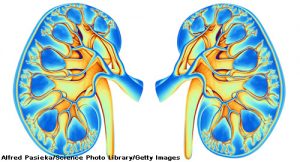 Editor’s note: EULAR 2020, the annual European congress of rheumatology, which was originally scheduled to be held in Frankfurt, Germany, starting June 3, was moved to a virtual format due to the COVID-19 pandemic.
Editor’s note: EULAR 2020, the annual European congress of rheumatology, which was originally scheduled to be held in Frankfurt, Germany, starting June 3, was moved to a virtual format due to the COVID-19 pandemic.
EULAR 2020 e-CONGRESS—The knowledge that chronic kidney disease (CKD) patients are at increased risk of bone disorders and a lack of data to guide clinicians on how to treat them can leave clinicians in a state of renalism—nihilism in renal care, an expert said at the European e-congress of rheumatology.
There is a sense, said Pieter Evenepoel, MD, PhD, adjunct head of nephrology, University Hospitals Leuven, Belgium, that there is nothing much to be done to help patients in this regard. That is often a mistake.
“Doing nothing is a treatment, and not always the best treatment,” Dr. Evenepoel said. “An increased awareness, from nihilism to pragmatism, may help control the fracture burden in CKD.”
A working group recently unveiled suggestions on how to manage bone issues in chronic kidney disease patients, urging clinicians to assess risk and advising how to proceed based on what they find.
Dr. Evenepoel said the need for better care is clear: Studies have shown the risk of fracture increases according to the stage of CKD, with those on hemodialysis having three to four times the number of fractures as the general population.
One study found that those 65–74 years old in the general population suffer about four hip fractures per 1,000 patient-years, while those on dialysis had almost 20.1 The research group, a collaboration of the European Renal Association and the European Dialysis and Treatment Association, did not have hard evidence to use, but offers a scheme for approaching osteoporosis risk in patients with CKD, said Dr. Evenepoel, who helps lead the group.
Here is an outline of the recommended approach, which has been submitted for publication:
Identify patients at risk, using risk scores and bone mineral density data. The FRAX (Fracture Risk Assessment Tool) score, the most widely used test for determining the risk of fractures, is just as useful in predicting fracture in CKD patients as it is in the general population, Dr. Evenepoel said. It is not as good at predicting the number of fractures—giving overestimates as often as underestimates—but that doesn’t diminish its value in predicting fractures overall.
For measuring bone mineral density (BMD), dual-energy X-ray absorptiometry (DXA) used to be viewed skeptically, because there was no evidence it could be used to predict fractures in patients with CKD. According to Dr. Evenepoel, that began to change after 2009, and it’s now known that DXA-measured bone mineral density is as good at predicting fractures in CKD patients as it is in patients generally.2
